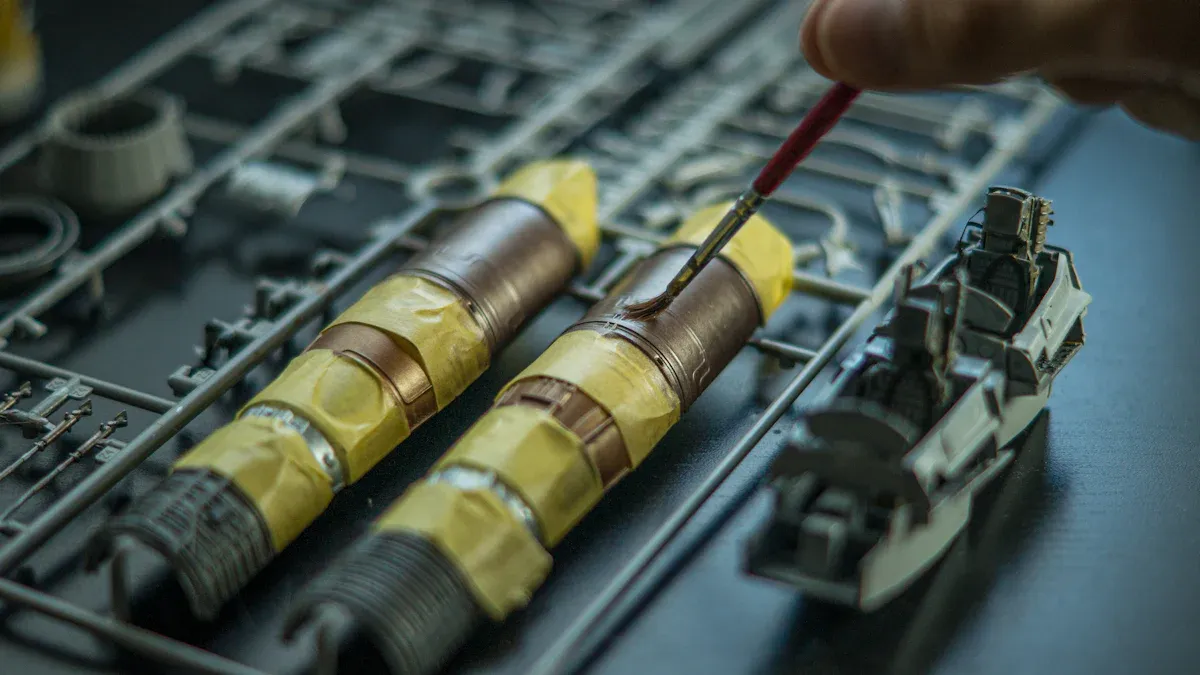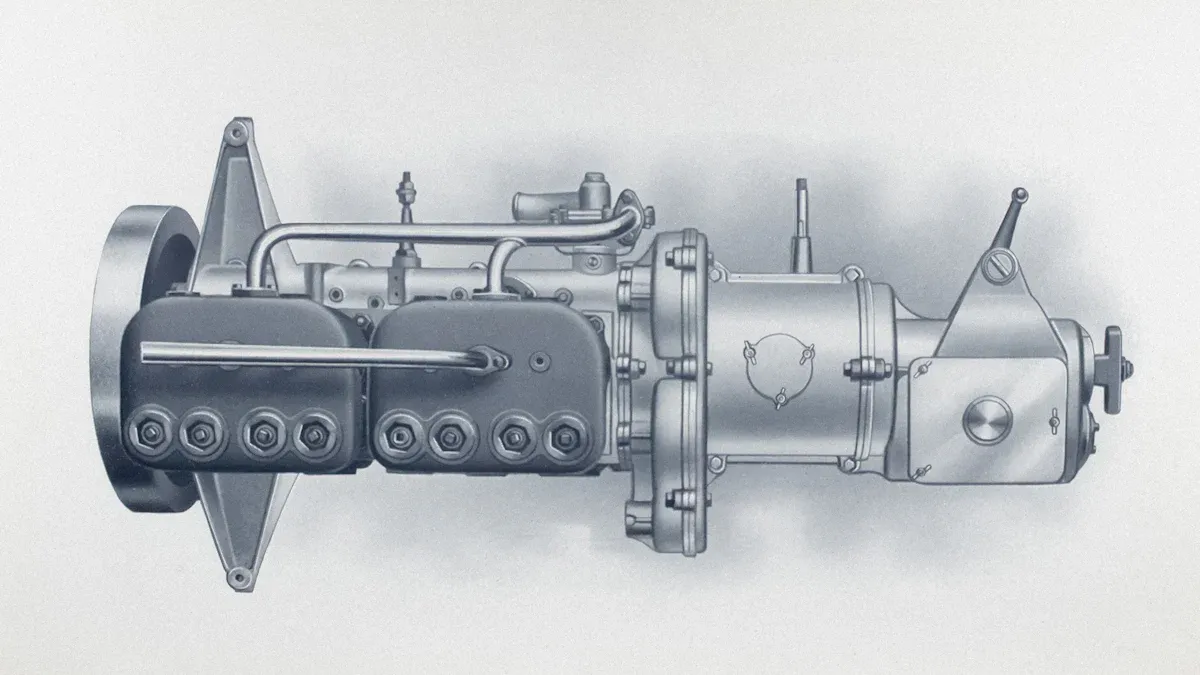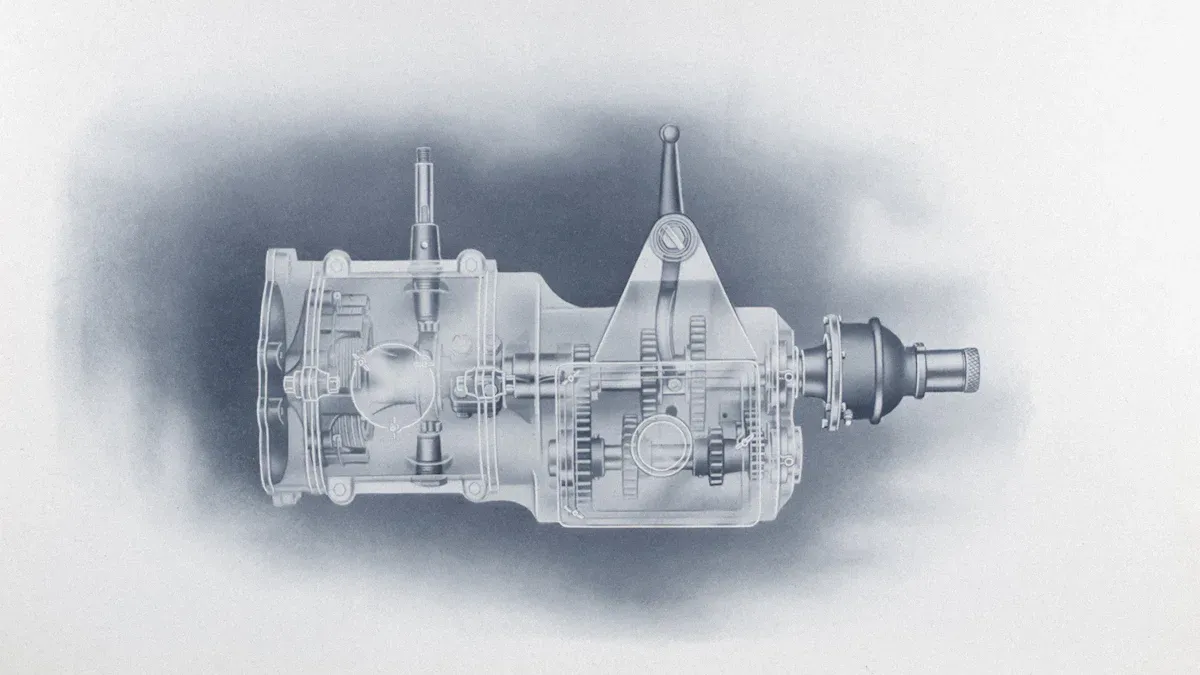
Screw injection molding uses a rotating screw to melt and mix plastic before injection. Plunger injection molding relies on a plunger that pushes molten plastic directly into the mold. Factories often select a Plastic Injection molding screw barrel for better material mixing. Some use a Twin Plastic Screw Barrel or a Blowing Screw Barrel. Single Plastic Screw Barrel Factories focus on precision and consistency.
Screw Injection Molding Overview
How Screw Injection Molding Works
Screw injection molding uses a rotating screw inside a heated barrel. The screw pulls plastic pellets from a hopper and moves them forward. As the screw turns, it melts the plastic through friction and heat. The melted plastic collects at the front of the barrel. When enough material gathers, the screw pushes the molten plastic into the mold. This process ensures even melting and mixing. The Plastic Injection molding screw barrel plays a key role in this system by providing precise control over temperature and pressure.
Key Features and Benefits
Screw injection molding offers several advantages:
- Consistent material mixing and melting
- High production speed and efficiency
- Ability to handle a wide range of plastics
- Precise control over shot size and injection pressure
Note: Factories often choose this method for its reliability and ability to produce complex parts with tight tolerances.
Common Applications
Manufacturers use screw injection molding in many industries. Some common products include:
- Automotive components
- Consumer electronics housings
- Medical device parts
- Packaging containers
This method supports both high-volume production and detailed part designs.
Plastic Injection Molding Screw Barrel

Role in the Injection Process
The Plastic Injection molding screw barrel plays a central role in the injection molding process. It holds the rotating screw that moves plastic pellets forward. As the screw turns, it creates friction and heat. This action melts the plastic evenly. The screw then pushes the molten plastic toward the front of the barrel. When enough material collects, the screw injects it into the mold. This process ensures that the plastic reaches the right temperature and consistency.
The Plastic Injection molding screw barrel helps control the speed and pressure of the injection. This control allows factories to produce parts with high accuracy and repeatability.
Design and Manufacturing Considerations
Engineers design the Plastic Injection molding screw barrel to handle different types of plastics. They select materials that resist wear and corrosion. The barrel must withstand high temperatures and pressures. Precision machining ensures the inside of the barrel is smooth. This smooth surface helps the screw move plastic without sticking.
Manufacturers use advanced equipment to produce the Plastic Injection molding screw barrel. They often use CNC machines and heat treatment furnaces. These steps improve the barrel’s strength and durability. Careful testing checks that each barrel meets strict quality standards.
- Key design factors include:
- Barrel length and diameter
- Type of steel or alloy used
- Surface treatment methods
A well-designed Plastic Injection molding screw barrel supports efficient production and long service life.
Plunger Injection Molding Overview

How Plunger Injection Molding Works
Plunger injection molding uses a simple mechanism. A heated barrel holds the plastic material. The machine heats the plastic until it becomes soft and ready for molding. A plunger, which looks like a piston, pushes the molten plastic forward. The plunger forces the plastic into the mold cavity. The mold shapes the plastic into the final product. The process does not mix the plastic as much as a screw system does. The plunger moves in a straight line and applies pressure directly.
Note: Plunger injection molding works best for basic shapes and less complex parts.
Key Features and Benefits
Plunger injection molding offers several unique features:
- Simple machine design
- Lower initial equipment cost
- Easy operation and maintenance
- Suitable for small production runs
This method provides a good choice for factories that need to produce simple plastic parts. The process uses fewer moving parts, which can reduce maintenance needs. Operators can set up and run the machine with basic training.
Common Applications
Factories use plunger injection molding for specific products. Some common examples include:
- Electrical switch covers
- Simple plastic toys
- Basic household items
- Small automotive parts
This method fits best for items that do not require high precision or complex shapes. Many manufacturers choose plunger injection molding for short production runs or when working with basic plastic materials.
Direct Comparison of Screw and Plunger Injection Molding
Process Differences
Screw and plunger injection molding use different methods to shape plastic parts. Screw injection molding uses a rotating screw to melt, mix, and push plastic into the mold. The screw moves the material forward while heating and blending it. This process creates a uniform melt and consistent quality.
Plunger injection molding uses a straight-moving plunger. The plunger pushes already melted plastic into the mold. The process does not mix the material as much. The plunger moves in one direction and applies pressure directly.
Tip: Factories often choose screw injection molding for complex parts because it mixes and melts plastic more evenly.
Performance Differences
Performance varies between these two methods. Screw injection molding delivers high precision and repeatability. The screw controls the amount of plastic and the speed of injection. This control helps factories make parts with tight tolerances and smooth surfaces.
Plunger injection molding works best for simple shapes. The process does not offer the same level of control. Parts may show more variation in size and finish. Plunger systems usually run at slower speeds and may not handle detailed designs as well.
- Screw injection molding:
- High accuracy
- Fast cycle times
- Consistent results
- Plunger injection molding:
- Basic accuracy
- Slower cycles
- Best for simple parts
Material Handling Differences
Material handling plays a key role in both methods. Screw injection molding handles a wide range of plastics. The screw mixes colorants and additives into the plastic. This mixing ensures even color and properties throughout the part.
Plunger injection molding does not mix materials as thoroughly. The plunger pushes the plastic forward without blending it. This method works best with basic materials and single colors.
| Feature | Screw Injection Molding | Plunger Injection Molding |
|---|---|---|
| Material Mixing | Excellent | Limited |
| Additive Distribution | Uniform | Uneven |
| Color Consistency | High | Moderate |
Cost and Maintenance Differences
Cost and maintenance also differ between these two methods. Screw injection molding machines often cost more to buy. They use advanced parts and require skilled operators. However, they produce parts faster and with less waste. Maintenance may involve checking the screw and barrel for wear.
Plunger injection molding machines cost less to purchase. The design is simple and easy to maintain. Operators can learn to use the machines quickly. Maintenance usually involves fewer steps, such as checking the plunger and seals.
Note: Factories should consider both the initial investment and long-term operating costs when choosing a method.
Pros and Cons Table
Selecting the right injection molding method depends on understanding the strengths and weaknesses of each process. The table below highlights the main pros and cons of screw and plunger injection molding. This comparison helps manufacturers make informed decisions for their production needs.
| Feature | Screw Injection Molding | Plunger Injection Molding |
|---|---|---|
| Pros | - Excellent material mixing - High production speed - Precise shot control - Handles complex parts - Consistent quality |
- Simple machine design - Lower initial cost - Easy to operate - Suitable for small runs - Fewer moving parts |
| Cons | - Higher initial investment - Requires skilled operators - More complex maintenance |
- Limited material mixing - Lower precision - Slower cycle times - Best for basic shapes |
Tip: Screw injection molding suits high-volume production and detailed parts. Plunger injection molding fits simple products and short runs.
Manufacturers often choose screw injection molding for its ability to produce high-quality, complex parts with speed and consistency. Plunger injection molding remains a practical choice for basic items and when budget or simplicity matters most. Each method offers unique advantages, so careful evaluation ensures the best fit for specific manufacturing goals.
Choosing the Right Injection Molding Method
Selecting the best injection molding method depends on several important factors. Each factory must consider its unique production needs before making a decision. Product design, material type, and production volume all play a role in this choice.
- Product Complexity:
Screw injection molding works well for parts with detailed shapes or tight tolerances. Plunger injection molding fits simple designs. - Production Volume:
High-volume manufacturing benefits from screw injection molding. This method offers speed and consistency. Plunger injection molding suits small batches or prototypes. - Material Requirements:
Some plastics need thorough mixing for color or additives. The screw system provides better mixing. The plunger system handles basic materials. - Budget and Maintenance:
Factories with limited budgets may choose plunger injection molding. This method has a lower initial cost. Screw injection molding requires a higher investment but delivers long-term efficiency.
Tip: Always match the molding method to the product’s requirements and the factory’s goals.
The table below summarizes key considerations:
| Factor | Screw Injection Molding | Plunger Injection Molding |
|---|---|---|
| Complex Parts | ✅ | ❌ |
| High Volume | ✅ | ❌ |
| Material Mixing | ✅ | ❌ |
| Lower Initial Cost | ❌ | ✅ |
Careful evaluation ensures the right choice. The correct method leads to better products and efficient production.
Screw and plunger injection molding offer unique advantages for different projects. Choosing the right method depends on several factors:
- Review production volume needs.
- Check material specifications.
- Examine part complexity.
- Inspect supplier capabilities.
- Analyze cost factors.
Careful evaluation ensures the best results for every manufacturing goal.
FAQ
What is the main advantage of screw injection molding?
Screw injection molding provides excellent material mixing. This method creates consistent parts with high precision. Factories often choose it for complex shapes and large production runs.
Can plunger injection molding handle colored plastics?
Plunger injection molding can use colored plastics. However, it does not mix colorants as evenly as screw systems. Color distribution may appear less uniform in finished parts.
How does a factory choose between screw and plunger injection molding?
A factory reviews product complexity, production volume, and material needs. Screw systems suit detailed, high-volume work. Plunger machines fit simple shapes and small batches.
Post time: Jul-16-2025
